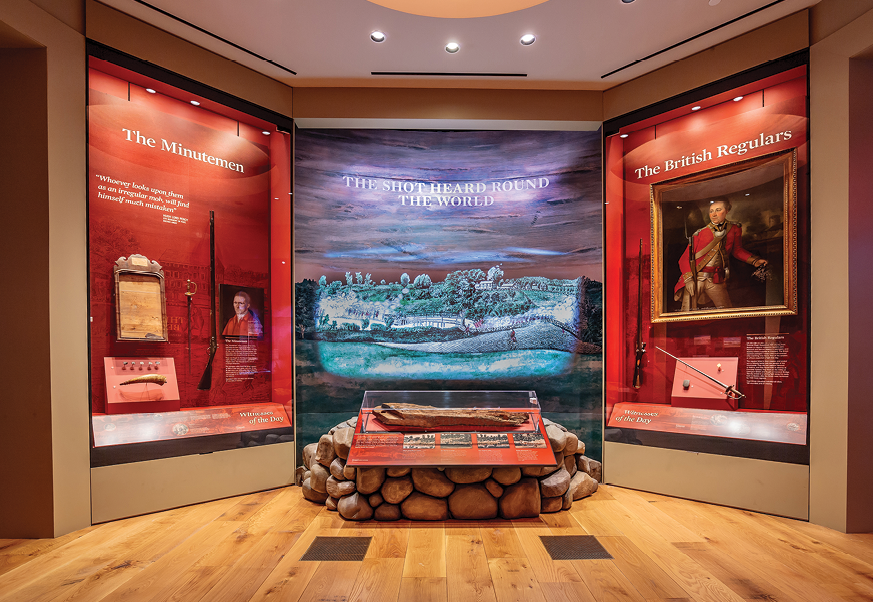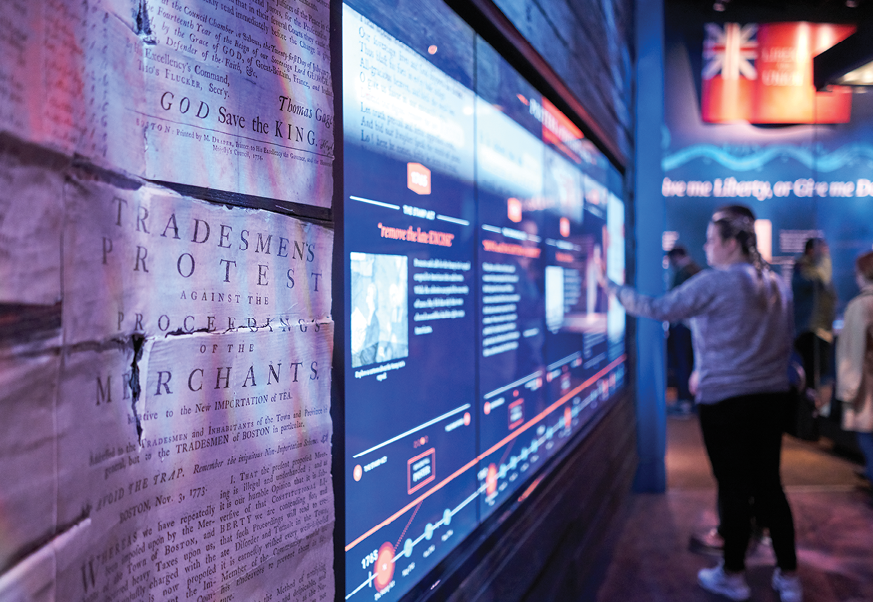- Home
- Media Kit
- MediaJet
- Current Issue
- Past Issues
- Ad Specs-Submission
- Ad Print Settings
- Reprints (PDF)
- Photo Specifications (PDF)
- Contact Us
![]()
ONLINE
![]()
ONLINE

Bringing History
to Life
Editors’ Note
Dr. R. Scott Stephenson’s broad public history experience spans nearly three decades and has been marked by public and professional acclaim for his creative and innovative approaches to engaging audiences. He has developed and collaborated on exhibits, films, and interpretive programs for numerous historical sites and organizations including Colonial Williamsburg, the Smithsonian, the Canadian War Museum, the National Park Service, George Washington’s Mount Vernon, the Heinz History Center, and the Museum of the Cherokee Indian. From 2007-2018, Stephenson led the development of the Museum of the American Revolution’s award-winning exhibitions, multimedia experiences and educational programming, as well as overseeing the care and expansion of its rich collection of art and artifacts, first as Director of Collections and Interpretation and then as Vice President of Collections, Exhibitions, and Programming. He served as a key member of the senior leadership team that raised $173 million to build and open the Museum, surpassing the original capital campaign goal of $150 million. The Museum opened in April 2017 to national and international acclaim, including rave reviews in The New York Times, Washington Post, and New York Review of Books. The core exhibition received many prestigious awards including the AAM 2018 Excellence in Exhibition Award for Special Achievement, AASLH Award of Merit, and the PA Museums Institutional Award. In November 2018, Stephenson was named President and CEO of the Museum. A native of Pittsburgh, Pennsylvania, Stephenson holds a BA from Juniata College and an MA and PhD in American History from the University of Virginia.
Museum Brief
The Museum of the American Revolution (amrevmuseum.org) uncovers and shares compelling stories about the diverse people and complex events that sparked America’s ongoing experiment in liberty, equality, and self-government. Through the Museum’s unmatched collection, immersive galleries, powerful theater experiences, and interactive elements, visitors gain a deeper appreciation for how the United States of America came to be and feel inspired to consider their role in ensuring that the promise of the American Revolution endures. Located just steps away from Independence Hall in Philadelphia, the Museum serves as a portal to the region’s many Revolutionary sites, sparking interest, providing context, and encouraging exploration. The Museum, which opened on April 19, 2017, is a private, nonprofit, and non-partisan organization.

“The Shot Heard ’Round the World” display at the
Museum of the American Revolution informs viewers about
the opening shot of the battles of Lexington and Concord on
April 19, 1775, which began the American Revolutionary War
Will you discuss the vision for creating the Museum of the American Revolution?
The Museum of the American Revolution opened in April 2017, and in today’s times, it is critical that a museum that is focused on telling the story of American history has a broader perspective than would have been taught to me as a person that was born in the 1960s and educated in the 1970s. The story of the American Revolution needs to include a broad swath of people in the way it tells the story of our founding and should be both full of inspiration, hope, and achievement while also recognizing we have stumbled and fallen along the way. We are focused on casting the American Revolution as an ongoing and unfinished struggle to create a more perfect union.
We crafted a mission statement which is to “uncover and share compelling stories about the diverse people and complex events that sparked America’s ongoing experiment in liberty, equality, and self-government.” We use object-based learning to put people in the presence of real objects to make the story come to life. There is a power in standing a few feet from George Washington’s Revolutionary War tent, for example, in our present-day world, when we are worried about the peaceful transition of power or the character of leadership. Having the opportunity to stand in the presence of authentic artifacts that are connected to real people, real stories is extremely powerful and important.
.png)
The Museum of the American Revolution is located steps
from Independence Hall in Philadelphia and serves as a
portal to the many Revolutionary sites in the region
Will you elaborate on the importance of creating a museum that comes to life for its visitors?
I think the most important thing is to, as much as possible, get people to feel an empathetic, human connection to the generations that got this thing started. One of the challenges we had was that we largely are dealing with a prephotographic era which makes it so hard when you are used to the visual element. We lead with the heart and are trying to make you connect with the story by moving you emotionally and seeing something that is relevant to your life today.
How important is the work of the Museum of the American Revolution when you look at the state of the country today?
The American Revolution is more relevant than ever. I do not think that anyone, regardless of where you are on the political spectrum, would deny that we are in a sharply polarized time, and the comforting thing should be to know that we have been in these moments many times in our history. It is often in reflecting back on our shared history that we find the common space to heal ourselves and to realize that we have a lot more in common than we may think we do. As a museum, we have an important role to play in the years ahead as we approach the nation’s 250th anniversary in 2026. I think that the Museum can play an important role by increasing awareness of the many ordinary, diverse, and little-known people who participated in creating the American nation.

The Museum of the American Revolution has interactive
displays that engage viewers including the Posters of Protest
display shown above
How did the Museum of the American Revolution adapt the way it operates to address the challenges caused by the pandemic?
We made a truly amazing pivot given that when people visit this museum in person, they have a deeply moving experience and then, in March 2020, we suddenly had to close the doors due to the impact of the pandemic. We were fortunate that we had a donor who came to us back in 2016 and was passionate about us creating a virtual version of our galleries. This became a goal for us, and while we did not necessarily prioritize it for that year, it did come online in October 2019. Who could have known that by April 2020 we were going to be closed for a substantial amount of time? Our technology team and education team were able to create a virtual museum experience in about six weeks and hold virtual field trips for students who would normally be visiting in person. I am so proud of the way our team rose to the occasion and showed such resilience and commitment during this uncertain time.
How valuable has it been to have such an engaged and experienced board of directors for the Museum of the American Revolution?
We would not be having this conversation if it was not for our founding chairman, H.F. “Gerry” Lenfest, who has done so much for this region. Gerry, who passed away in 2018, was a force of nature who supported so many organizations. We acquired the site for the museum in Philadelphia during the financial crisis in 2009, and there was a good deal of realistic skepticism as to whether the project would get off the ground, but Gerry was firm in his commitment to make this a reality.
We have board leadership that is there to help whenever we need and as the Museum continues to grow and expand, we have brought on additional board members to help support the future of the Museum and the critical role that the Museum plays in telling stories about the American Revolution.
Are you able to enjoy the process and take moments to reflect on the impact that the Museum of the American Revolution has made?
I can honestly say, without exaggeration, that I never feel that I am coming to work when I enter this building. That does not mean that there are not challenging days and problems that we need to confront, but I absolutely love what we do here. I make sure to walk around at least once a day and talk to visitors and ask them what interested them and moved them. I feed on the energy that comes from interacting with our visitors and seeing the impact that the Museum is making in fulfilling its mission.![]()